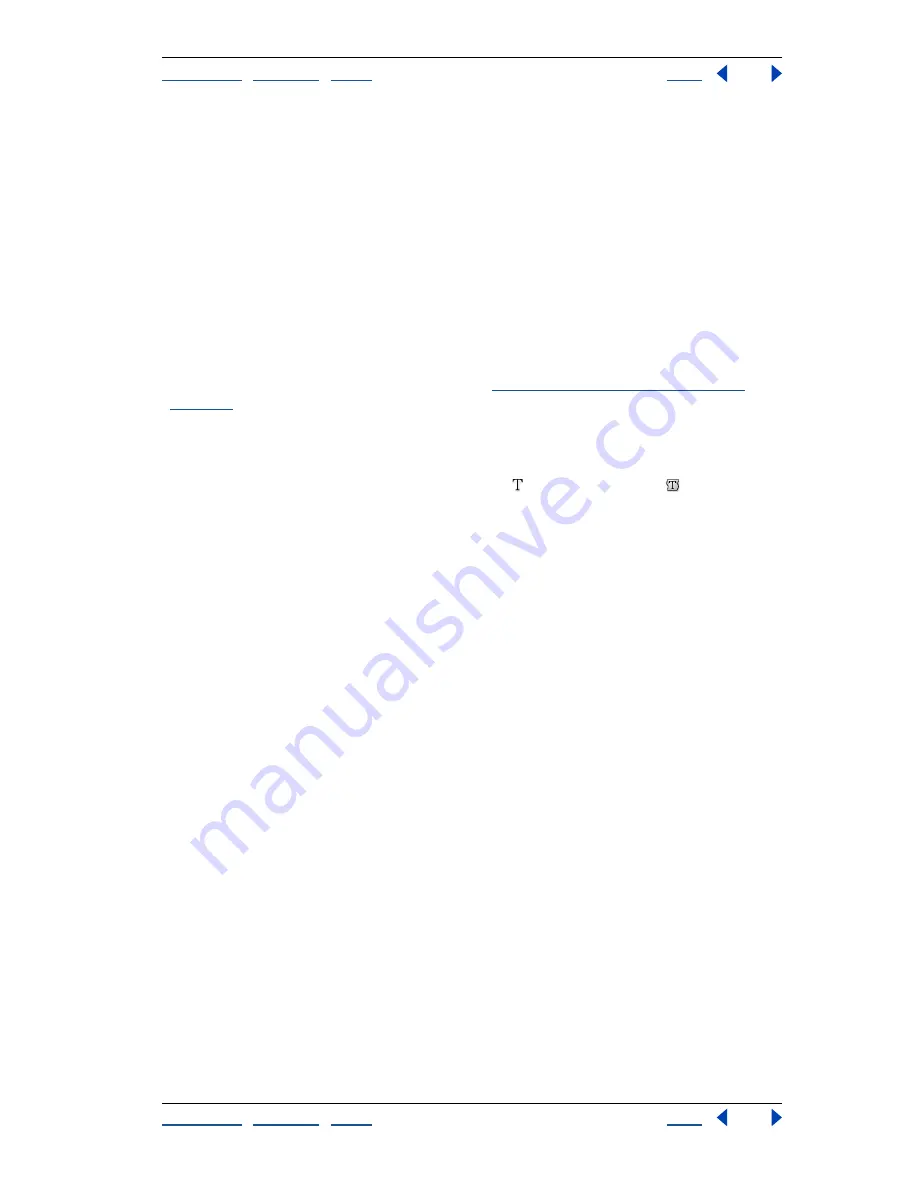
Using Help
|
Contents
|
Index
Back
280
Adobe Illustrator Help
Using Type
Using Help
|
Contents
|
Index
Back
280
•
To remove default tabs, drag to the right (horizontal text) or toward the bottom
(vertical text).
•
To replace default tabs, drag to the left (horizontal text) or to the top (vertical text).
•
To move all tab stops simultaneously to the right/bottom of the selected tab, Shift-drag
the tab stop.
•
To remove a tab, drag it off the top right or left side of the ruler.
Fitting headline type
Illustrator lets you fit type across the full width of a type path in an object by using the Fit
Headline command. The Fit Headline command was designed to work with Adobe
Multiple Master fonts by adjusting the weight of the font and the tracking value when
distributing type along a path. However, the Fit Headline command also works with other
fonts by adjusting only the tracking value. (See
“Specifying kerning and tracking” on
page 260
.)
If you change the tracking value or the type, be sure to reapply the Fit Headline command.
To fit headline type across a specified area:
1
Enter type in a type container using a type tool or an area-type tool .
2
Select the type using any type tool.
3
Choose Type > Fit Headline.
Hyphenating words
The autohyphenation feature automatically hyphenates words where appropriate at the
ends of lines. You can set the hyphenation parameters in the Paragraph palette. When you
select the autohyphenation option, you can specify the minimum number of letters
allowed at the beginning or end of a hyphenated word. You can also limit the number of
consecutive hyphenated lines.
You can enter a
discretionary hyphen
to hyphenate a word manually. Illustrator always
breaks a word at a discretionary hyphen, regardless of the autohyphenation setting.
You can also specify the hyphenation for a specific word or exclude a word from being
hyphenated by using the Hyphenation Options command. In addition, you can select the
language in which the hyphenation exception takes place.
To enter a discretionary hyphen:
1
Select a type tool, and click where you want to enter the hyphen.
2
Press Shift+Ctrl+hyphen (Windows) or Shift+hyphen (Mac OS).
To set the autohyphenation feature:
1
In the Paragraph palette, click Auto Hyphenate. If the option is not visible, choose Show
Options from the palette menu.
2
Choose Hyphenation from the Paragraph palette menu.
3
In the Hyphenate text boxes, enter the minimum number of letters allowed from the
beginning and end of a hyphenated word.
4
If desired, enter the maximum number of consecutive hyphenated lines in the Limit
Consecutive Hyphens To text box.






























